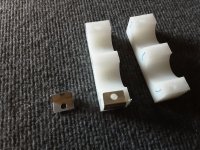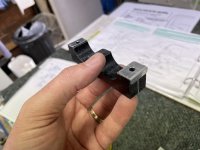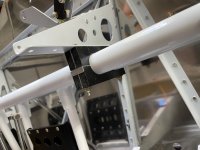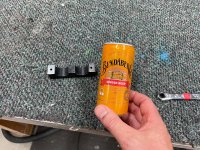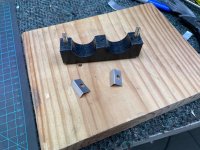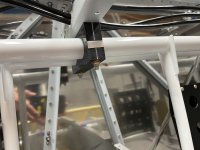I hung my rudder pedals and split the centre block using a Japanese saw, which has a very tiny kerf.
I installed the blocks with a thick washer and tightened it down, checking for friction on the rudder bars. There was no friction present and I realised the plastic block was actually deforming around the washer somewhat. There was a lot of side to side play in the assembly - like the block was not clamping onto the rudder bars.
I removed the thick washer and replaced it with a thin set, but the same issue. It feels like the blocks are not clamping on the bars, and there is side to side play.
Is this normal? or could the very thin kerf of the Japanese saw be causing me issues - aka the block halves are too tall they cannot clamp onto the bars.
I have not tried installing it yet with no washers (as the plans call for a washer), but this was my next thought.
Unless this is how everyone else’s assembly is?
Here’s a video of the play:
I installed the blocks with a thick washer and tightened it down, checking for friction on the rudder bars. There was no friction present and I realised the plastic block was actually deforming around the washer somewhat. There was a lot of side to side play in the assembly - like the block was not clamping onto the rudder bars.
I removed the thick washer and replaced it with a thin set, but the same issue. It feels like the blocks are not clamping on the bars, and there is side to side play.
Is this normal? or could the very thin kerf of the Japanese saw be causing me issues - aka the block halves are too tall they cannot clamp onto the bars.
I have not tried installing it yet with no washers (as the plans call for a washer), but this was my next thought.
Unless this is how everyone else’s assembly is?
Here’s a video of the play:



